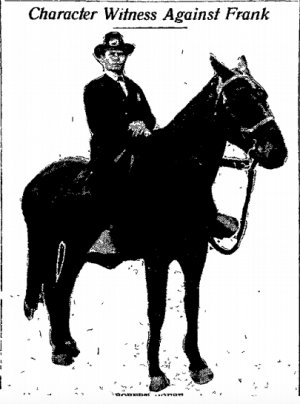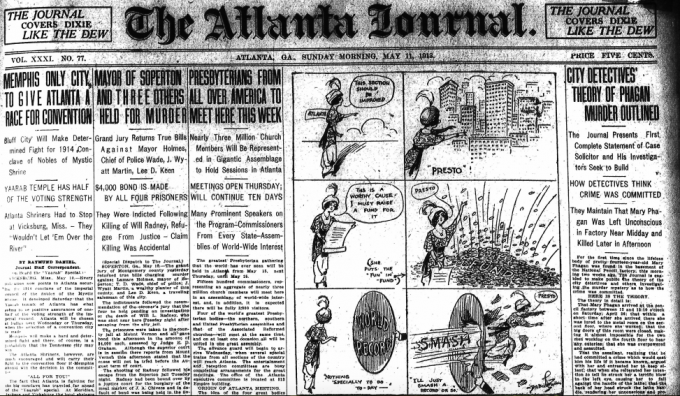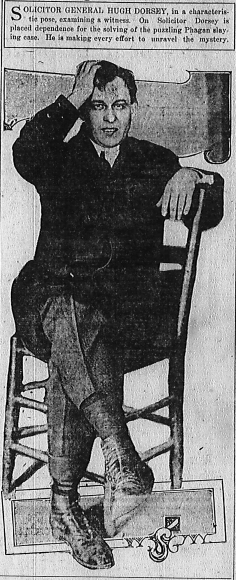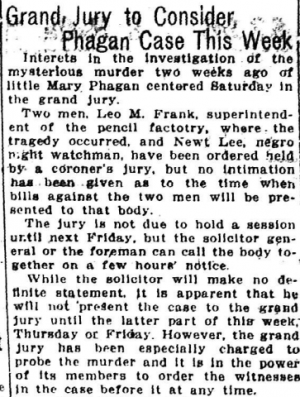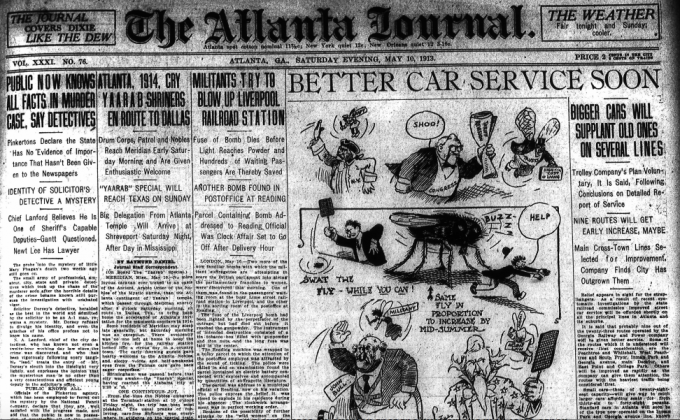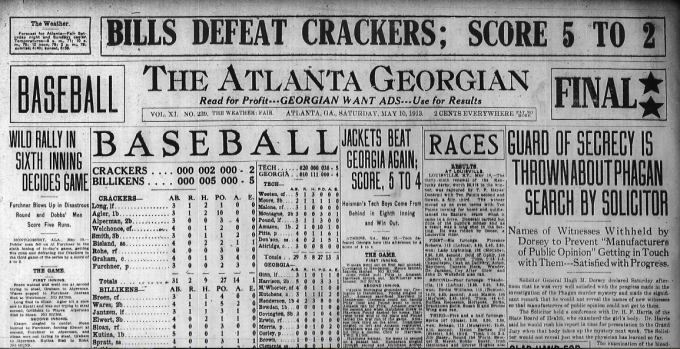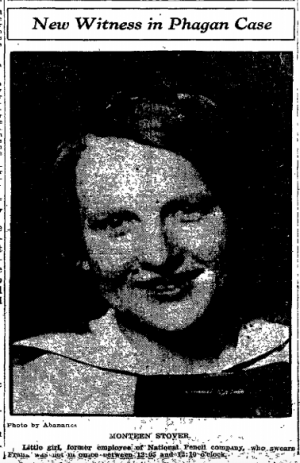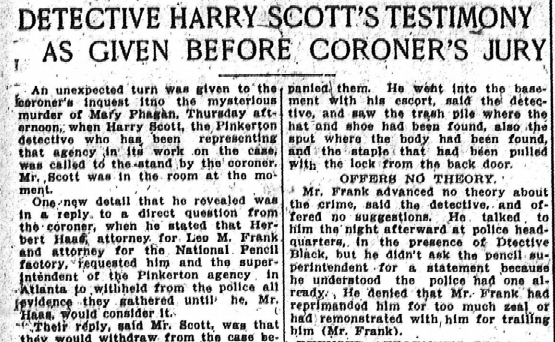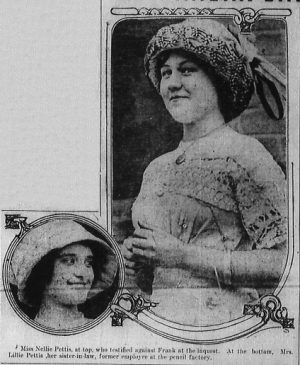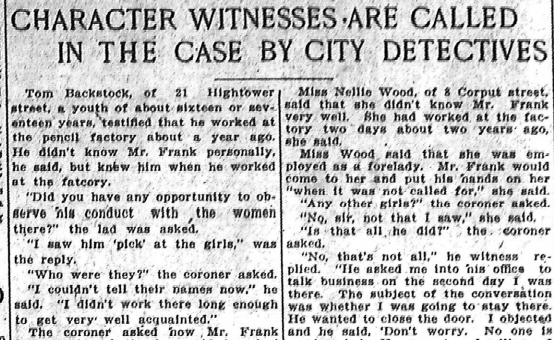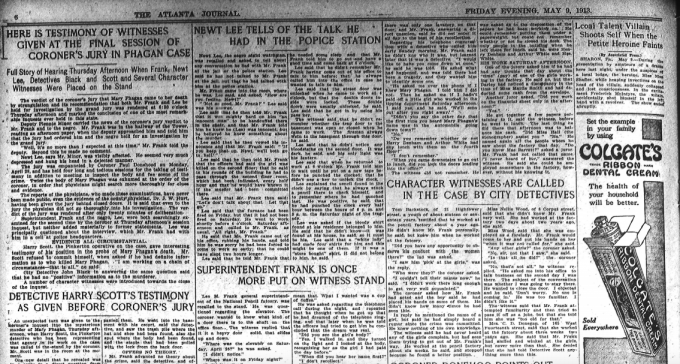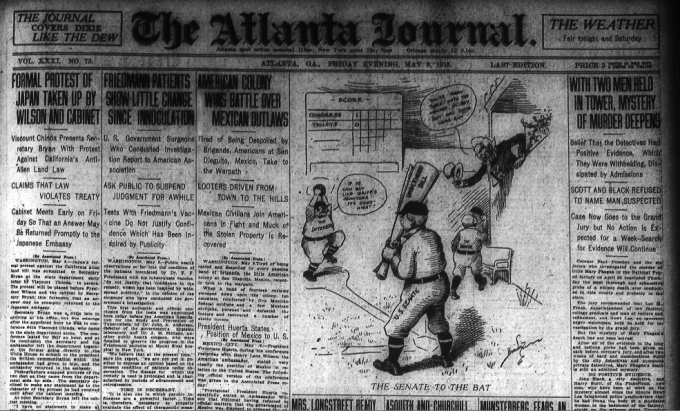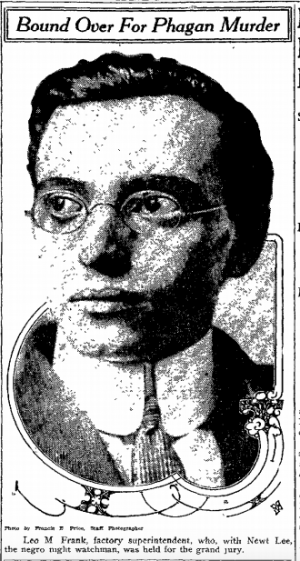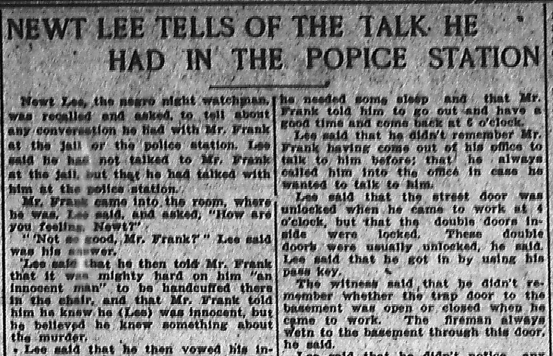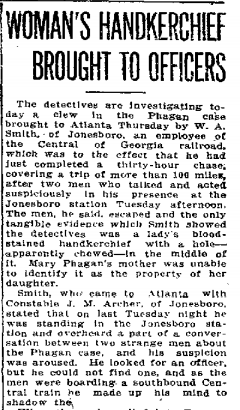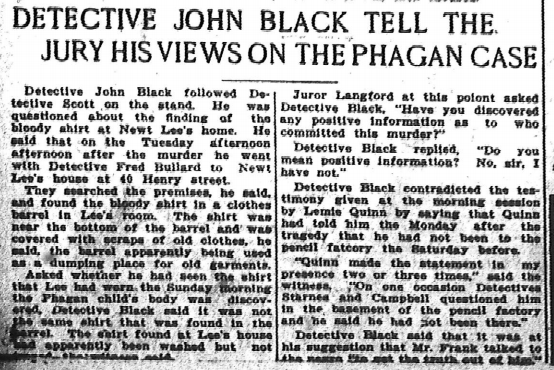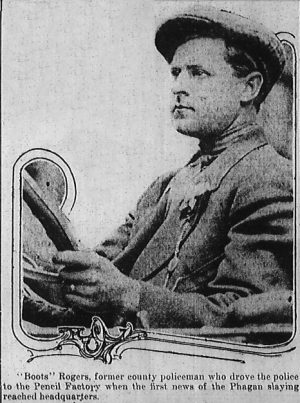Another in our series of new transcriptions of contemporary articles on the Leo Frank case.
Atlanta Constitution
Sunday, May 11th, 1913
Robert House, Now a Special Policeman, Tells the Atlanta Detectives of an Incident of Over a Year Ago.
SEES FRANK IN TOWER AND RECOGNIZES HIM
Three More Pinkertons Are Put on the Phagan Case, Under the Supervision of Harry Scott.
Detectives have procured in Robert P. House, a special policeman, a witness who has testified that he once apprehended Leo M. Frank, the suspect in the Mary Phagan mystery, and a young girl in a desolate spot of the woods in Druid Hills Park.
The policeman declares he obtained admission from Frank that he and his companion had come to the woods for immoral purpose.
House is a special officer in the employ of the Druid Hills Land company. Several days ago, he went to the tower in which the suspected superintendent was imprisoned to identify him. When he emerged from the jail, he declared he recognized the prisoner as the man he apprehended in Druid Hills.
Volunteers His Testimony.
He volunteered his testimony. Upon first reading of the Phagan murder, he recalled the incident in the woods. Recollecting that the man had told that he was superintendent of the National Pencil factory, he says he went immediately to the detective department, and an officer escorted him to Frank’s cell in the Tower.
The policeman says the incident occurred a year or more ago, some time after 2 o’clock one summer afternoon. He declares he had seen Frank enter the park frequently with a girl, and on that particular occasion decided to shadow him. As the superintendent and his girl companion stepped from the Ponce de Leon to Druid Hills trolley car at the end of the line, House says he followed them to a swampy section of the woodland, considerable distance from the roadway. Continue Reading →

